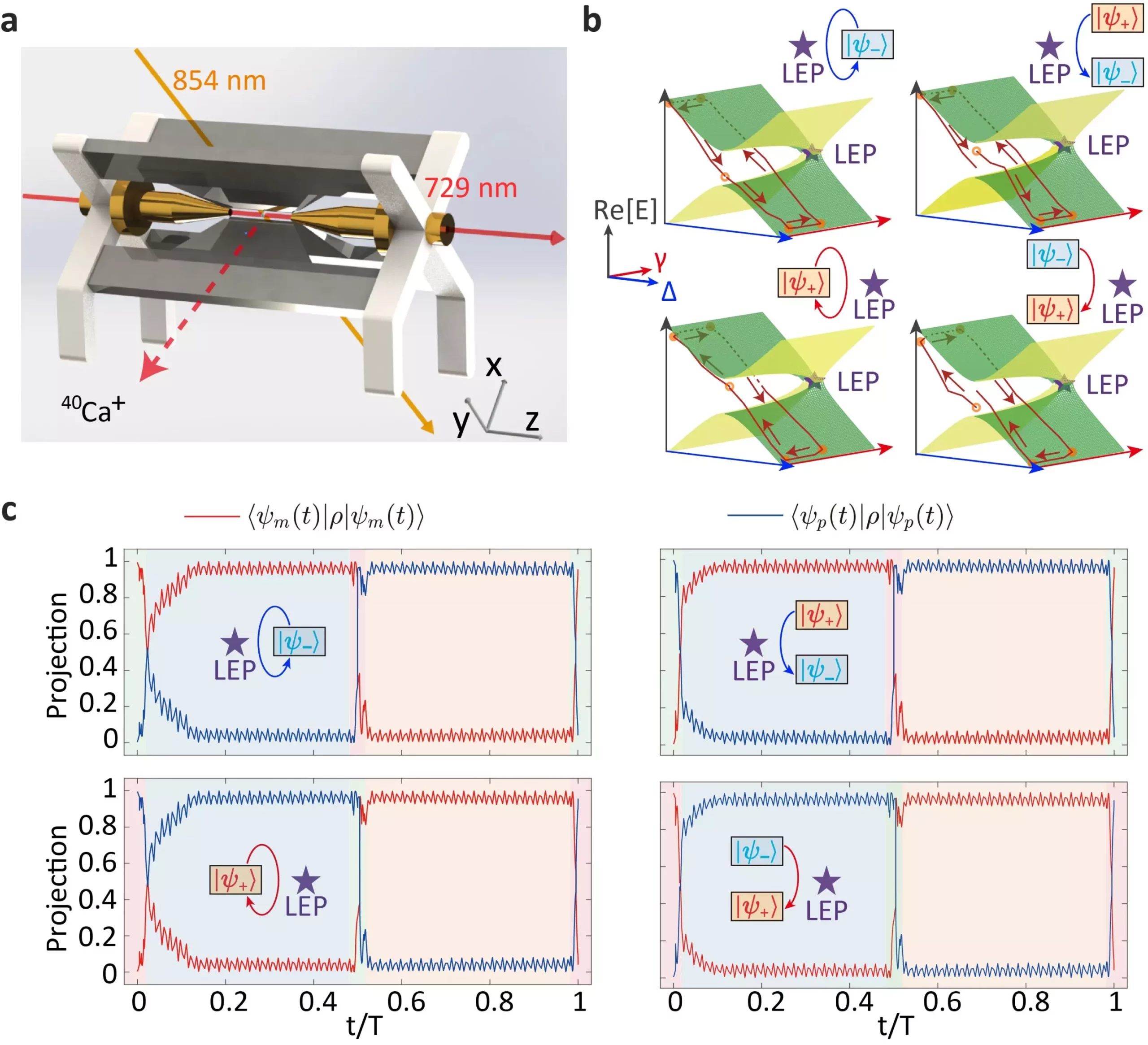In today’s technologically driven world, the efficient conversion of heat into work through heat engines stands as a cornerstone of modern industry and innovation. As we advance into areas like nanotechnology, it becomes paramount to explore Quantum Heat Engines (QHEs). These systems are not only pivotal for efficient energy conversion but also for a profound understanding of the underlying principles of quantum thermodynamics. Unlike classical heat engines, QHEs operate as open systems, interacting dynamically with their thermal environment, which leads to phenomena such as quantum jumps. This interaction makes them ideal candidates for studying the complexities of quantum systems.
Traditional approaches in quantum mechanics primarily focus on Hamiltonian exceptional points (EPs). However, a fresh perspective is required for the nuanced dynamics of QHEs. Liouvillian exceptional points (LEPs) emerge as a critical analytic tool in understanding these dynamics, particularly for qubit-based QHEs. Unfortunately, despite the extensive research on Hamiltonian EPs, the exploration of LEPs remains relatively nascent within the field of quantum thermodynamics. LEPs present a novel framework for examining physical properties that arise from quantum jumps, a topic previously overshadowed by more conventional methodologies.
Recent work spearheaded by Professor Mang Feng and his team has provided groundbreaking insights into the realm of chiral quantum heating and cooling. This research adds a significant chapter to the study of thermodynamic behaviors in quantum systems, revealing distinct chiral properties tied to the directional dynamics of the system. The researchers employed an optically controlled ion to facilitate an experiment demonstrating how encircling a closed loop in a specific direction can switch the operational mode of the system between a heat engine and a refrigerator. The directionality of these loops is central to understanding how the system behaves, demonstrating how non-adiabatic transitions and the Landau-Zener-Stückelberg process enhance chiral operations.
What sets this study apart is its establishment of a direct link between chirality, heat exchange, and the topological landscape represented by Riemann surfaces, independent of the presence of LEPs. Professor Feng eloquently emphasizes that asymmetric mode conversion within the quantum system is intrinsically related to these topological elements. This groundbreaking connection not only bolsters existing knowledge within classical systems but also paves the way for novel applications in quantum technologies.
The implications of this research stretch far beyond academic curiosity. The insights gained from the study of LEPs and chiral thermodynamic properties in quantum systems promise advancements across several technology sectors, particularly in energy conversion systems like QHEs and quantum computing frameworks. With ongoing developments aiming at optimizing QHE dynamics through LEPs, we stand at the threshold of a new era in quantum thermodynamics—one that could revolutionize how we understand and utilize quantum systems for practical technological advancements.


Leave a Reply